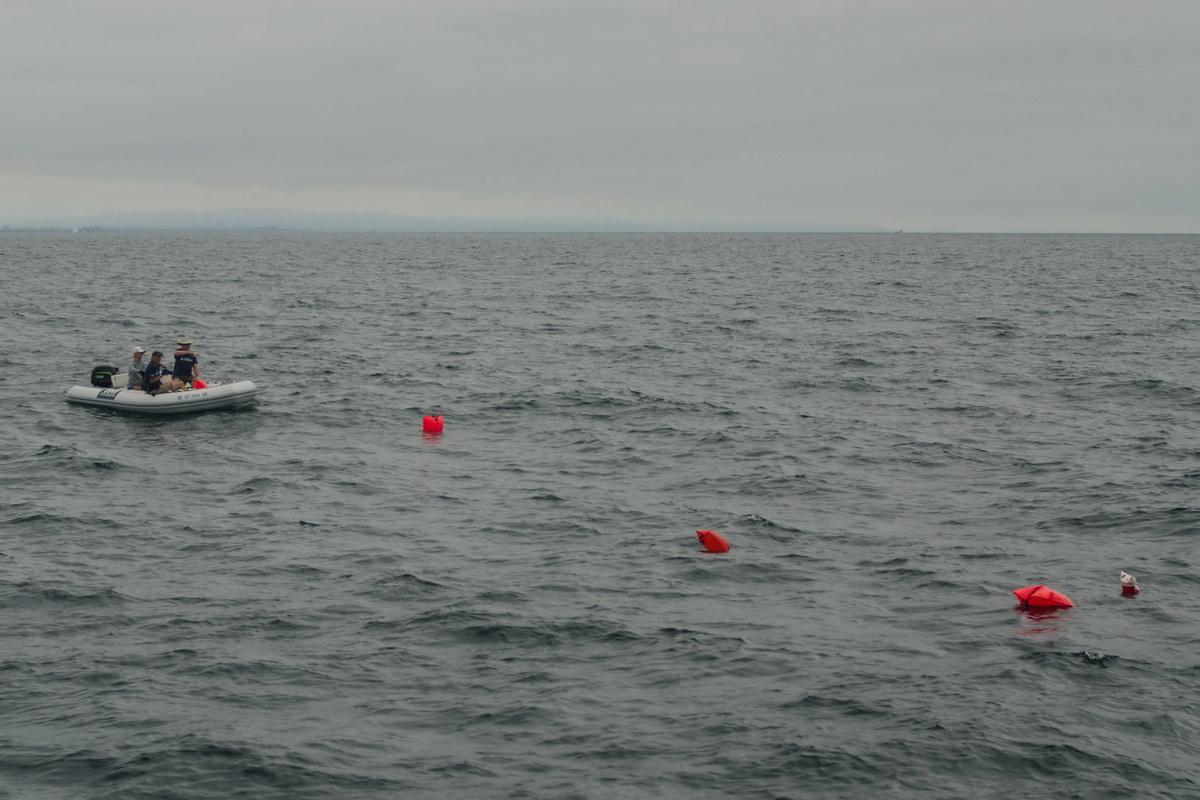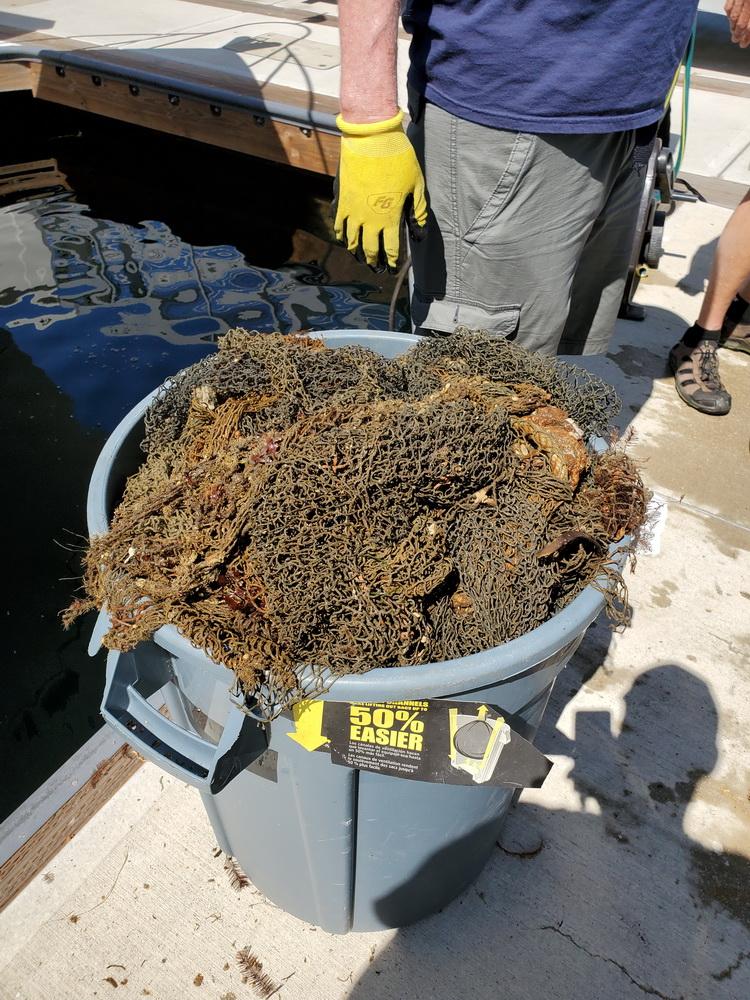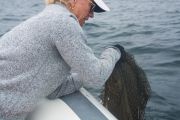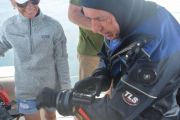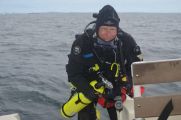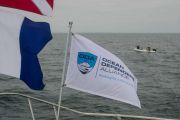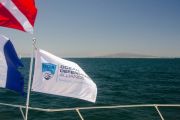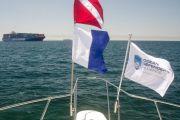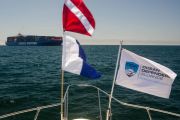By Founder and President Kurt Lieber
At ODA, we believe all ocean life is precious, so we continually seek to locate and remove abandoned fishing gear such as ghost nets. It’s our goal to remove the entangling mesh before any wildlife gets caught in it and dies.
On Sunday, August 11th, we boarded our flagship Mr. Barker’s LegaSea and headed back to a site we’ve been working on for several months: The African Queen, or the Tammy, as some know it.
By the look on the crews' faces, you'd think they KNOW they're going to strike the jackpot today...
Don’t Let the Boat’s Size Fool You
This wreck is a rather small fishing boat, 40 feet long. But, because it lies in an area that squid like to lay their eggs in, the wreck continually becomes a target for the squid fishermen. We’ve been removing nets from this site for the last 10 years, and I can’t recall any dives on this sunken vessel where we haven’t found more net on it.
But that doesn’t deter us a bit. As long as we find nets that can kill animals, we’ll do our best to remove it.
The site is about six miles from the Port of Los Angeles, and on this rather cloudy day we could look back towards shore and still see the hills of Palos Verdes and Catalina Island. Even though it started out overcast, around noon the sun started to shine.
Great Visibility Yields Reward
We arrived at the site around 10 am, and our dive team was splashing in the water a few minutes later. Today’s dive team consisted of Todd Kortte, Al Laubenstein, Bill Maley, Geoff Walsh, and Leslie Wang. Deck crew was Jim Lieber, Scott Marshutz, Sue StSure, and I.
Topside conditions were pretty nice, with just 1-2-foot waves. Because it was overcast, it didn’t look like the underwater vis was going to be any good. But, in reality it turned out to be quite exceptional.
As the divers headed to the bow to drop down the anchor chain (using it as a guide to get to the debris site), there was a little current, but not enough to cause any problems.
And within 15 minutes we started seeing lift bags at the surface.
Over the next 30 minutes we had a total of six bags bobbing at the surface. Jim, Scott, and Sue jumped in the RIB (rigid inflatable boat) and headed out to see if they could drag the lift bags (with debris attached) over to the LegaSea for me to haul them out.
And it worked! One by one they brought them over to me and soon we had all the bags with their nets attached onto the boat and stored in a bucket.
The divers surfaced about 35 minutes after they went down, and then it was time to take a surface interval (a break topside), warm up, and get ready for the second dive.
While we were talking about how that dive went, we heard from Todd, our new underwater (UW) videographer, that the visibility was insane at 80 feet! Wholly mackerel, that NEVER happens here. Well, obviously I can’t say “never.” Todd is putting together some more video to show you how outstanding it looked down there. So please check back in the next day or two to view it.
Even the Fast Current Couldn’t Stop Us
Around one o’clock, all the divers were heading back to the wreck to continue removing as much net as they could. But, by now, the current had REALLY picked up. In fact, it was strong enough that once they were in the water, I had to toss them a line and then I dragged them from the stern to the bow. They waited for me to deliver all the divers, and they quickly descended.
Again, within a few minutes we had more lift bags to retrieve.
The RIB crew hauled all the goodies over to me, and voila!
We had a 55-gallon garbage can full of net. It weighed about 250 pounds!!
By 1:30 everyone was back onboard, and we had a huge, and I mean HUGE, freighter come right by us. I had been in contact with the people who oversee all the tanker traffic in and out of Los Angeles and Long Beach Harbors, so we weren’t in any danger. But wow, seeing one of those things from up close sure can give you the willies…
There is still a LOT of net left on the site, and so we’ll go back soon.
Thanks to all the crew who keep chipping away at the net that has literally smothered the wreck.
Also, thanks to Scott Marshutz for taking all the pictures. Nice shooting, partner!
Your support is critical to allowing these debris-removal outings to happen. Please take a look at the various ways you can help defend the oceans through ODA!








